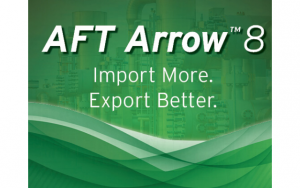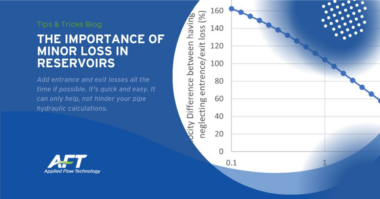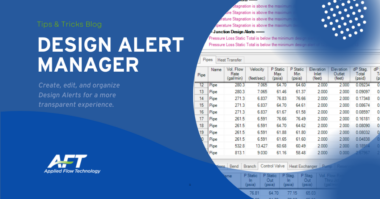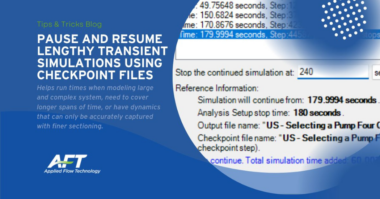A lot of gas flow engineering history has revolved around how to treat gases as liquids or how to simplify gas flow equations down to simple isothermal relationships. In other words, the majority of gas flow engineering historically was about how to take short cuts with gas flow calculations.
Today it is no longer necessary to take short cuts, but a lot of them still come into play. AFT Arrow, AFT’s industry leading gas flow analysis software, will be celebrating its 25th anniversary this year. From the beginning AFT Arrow has been a leader. Primarily because AFT Arrow does not take short cuts. It solves the fundamental mass, momentum and energy equations while including real gas equations of state, Mach number and sonic choking, as well as simulating heat transfer and performing a global system mass and energy balance.
The solution algorithms in AFT Arrow were developed in the original version 1 and then refined in version 2 in 1999 to more robustly solve systems with sonic choking in parallel flow paths. Since that time the solution algorithms have proven to be accurate and robust.
Why is it hard to calculate gas flow?
1. Gases are compressible – this is of course obvious to gas system engineers. The compressibility of gases means simple relationships for liquids where the density is treated as a constant, get more complicated very quickly.
2. Velocity changes in constant diameter pipes – this is a result of the changing density as is summarized as Equation 2 in the Chemical Engineering paper linked above. To make things even more complicated, the velocity is non-linear.
3. Density is strongly linked to temperature – in liquids the link between density and temperature exists, but it is typically weak. In gases, the link is strong and must be accounted for. The equation of state relates how the gas density, temperature and pressure are coupled. The equation of state must be solved simultaneously with the equations of flow to properly account for the density/temperature coupling.
4. Sonic flow limitations – while liquids have a speed of sound like gases, it is rarely if ever an issue with liquid flow. With gases the speed of sound is frequently an issue. When the gas velocity reaches the speed of sound then the flow is said to choke. This is sometimes called critical flow. The Mach number of the gas goes to 1. And the flow has reached the maximum possible for the given supply conditions. Sonically choked flow is a defining feature of many gas system applications with gas relief valve systems being a good example.
 5. Pipe networks – matching up various single pipe gas calculations when there is a network of parallel and/or branching pipes quickly becomes overwhelming for the engineer. Not only must mass be balanced, but also energy must be balanced. This can become quite complicated.
5. Pipe networks – matching up various single pipe gas calculations when there is a network of parallel and/or branching pipes quickly becomes overwhelming for the engineer. Not only must mass be balanced, but also energy must be balanced. This can become quite complicated.
Contact Applied Flow Technology for more information on AFT Arrow, or you can visit the AFT Arrow webinar library to determine of this software tool is a good fit to help you meet design requirements.





Comments